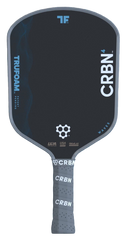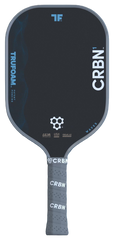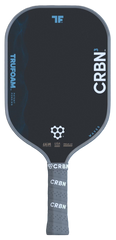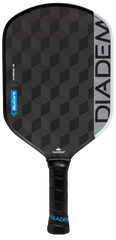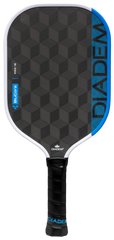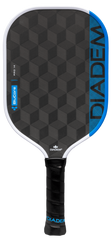Pickleball is one of the fastest-growing sports in the world, and it's not hard to see why. Combining elements of tennis, badminton, and table tennis, it offers a unique blend of fun, competition, and social interaction. Doubles play, in particular, is a popular format for both casual and competitive players. Whether you're a beginner or an experienced player, understanding the nuances of doubles play can significantly enhance your game. In this comprehensive guide, we answer the ten most common questions about pickleball doubles play to help you improve your skills and enjoy the game even more.
1. What Are the Basic Rules of Pickleball Doubles?
The rules of pickleball doubles are straightforward but crucial to understand. Here are the basics:
- Court Size and Setup: The court dimensions are 20 feet wide by 44 feet long, the same as in singles play. The net is 36 inches high at the sidelines and 34 inches at the center.
- Serving: The serve must be made underhand and diagonally cross-court. The server must keep both feet behind the baseline until the ball is struck. The serve must land within the confines of the opposite diagonal court.
- Scoring: Only the serving team can score points. A game is typically played to 11 points, and a team must win by at least 2 points.
- Non-Volley Zone: The area within 7 feet of the net on both sides is known as the non-volley zone or the kitchen. Players cannot volley the ball (hit it in the air without letting it bounce) while standing inside this zone.
- Double-Bounce Rule: The receiving team must let the serve bounce, and the serving team must let the return of serve bounce before playing the ball. After these two bounces, the ball can be volleyed or played off the bounce.
2. How Do You Communicate Effectively with Your Partner?
Effective communication is key to success in pickleball doubles. Here are some tips to improve teamwork:
- Call Your Shots: Clearly call out when you intend to take a shot. Common phrases include "mine," "yours," or simply calling out the direction of the shot.
- Plan Your Strategy: Before the game, discuss your strengths, weaknesses, and preferred strategies. Decide who will cover which parts of the court and how you'll handle different situations.
- Stay Positive: Encourage each other, even after mistakes. Positive reinforcement helps maintain morale and focus.
- Non-Verbal Cues: Develop a set of non-verbal signals for situations where speaking might be challenging. A quick glance or hand signal can be very effective.
3. What Are the Best Strategies for Serving in Doubles?
Serving in doubles pickleball is not just about getting the ball in play; it's an opportunity to put your opponents on the defensive. Here are some strategies:
- Deep Serves: Aim for deep serves that land near the baseline. This pushes your opponents back and makes it harder for them to execute an effective return.
- Target Weaknesses: Observe your opponents and target their weaker sides. For example, if a player struggles with backhand returns, aim your serves there.
- Vary Your Serves: Mix up your serves with different speeds, spins, and angles to keep your opponents guessing and disrupt their rhythm.
4. How Do You Master the Third Shot Drop?
The third shot drop is one of the most crucial shots in pickleball doubles. It involves hitting a soft shot that lands in the opponent's kitchen, allowing you and your partner to advance to the net. Here’s how to master it:
- Use a Continental Grip: This grip provides better control and touch, essential for a successful drop shot.
- Focus on Placement: Aim to land the ball just over the net and into the non-volley zone. The goal is to make it difficult for your opponents to attack.
- Practice Consistently: Spend time practicing this shot to develop the right touch and consistency. The more you practice, the better you’ll become at executing it under pressure.
5. What Is the Best Way to Position Yourself on the Court?
Proper positioning can make a huge difference in doubles play. Here are some key positioning tips:
- Stay Side by Side: Generally, you and your partner should move together and maintain a side-by-side position. This helps cover the court more effectively and avoids leaving open spaces.
- Communicate and Adjust: If your partner is pulled out wide, shift to cover the middle and communicate to adjust your positions accordingly.
- Be Ready to Switch: Sometimes, you may need to switch sides to cover for each other. Communicate clearly when this is necessary to avoid confusion.
6. How Do You Defend Against Fast and Aggressive Players?
Defending against aggressive opponents requires quick reflexes and strategic play. Here’s how you can handle it:
- Stay Calm: Keep your composure and don’t rush your shots. Playing against aggressive players can be intimidating, but staying calm will help you make better decisions.
- Block and Reset: When facing fast shots, use a soft block to neutralize the pace and reset the rally. This can disrupt their rhythm and give you time to regain control.
- Target Their Feet: Aim your shots at your opponents’ feet. This makes it difficult for them to hit aggressive shots and often forces weaker returns.
7. How Do You Use the Lob Effectively in Doubles?
The lob can be a powerful tool in doubles if used correctly. It can push your opponents back and create openings for you to advance. Here’s how to use it effectively:
- Choose the Right Moment: Lob when your opponents are close to the net and not expecting it. This will force them to retreat and give you control of the net.
- Aim Deep: A good lob should land near the baseline, making it difficult for your opponents to smash it.
- Vary Your Lobs: Mix up your lobs with different heights and spins to keep your opponents off balance.
8. How Do You Handle Being Targeted by the Opponents?
Sometimes, opponents may target you if they perceive you as the weaker player. Here’s how to handle it:
- Stay Positive: Don’t get discouraged if you’re being targeted. Use it as an opportunity to improve and prove your resilience.
- Focus on Consistency: Prioritize making consistent, safe shots rather than trying to do too much. Over time, your opponents may shift their focus if you demonstrate reliability.
- Work with Your Partner: Communicate with your partner and strategize on how to support each other. This might involve switching positions or covering more of the court.
9. What Are the Best Drills to Improve Doubles Play?
Practicing specific drills can significantly improve your doubles play. Here are some effective drills:
- Dinking Drills: Practice dinking back and forth with your partner to improve control and touch in the non-volley zone.
- Third Shot Drop Drills: Work on your third shot drop by practicing with a partner or against a wall. Focus on consistency and placement.
- Serving and Returning: Spend time practicing serves and returns, targeting different areas of the court and varying your shots.
- Volleys and Smashes: Practice volleys and smashes to improve your reflexes and power at the net. Work on both offensive and defensive volleys.
10. How Do You Prepare Mentally for Doubles Matches?
Mental preparation is just as important as physical practice. Here are some tips to prepare mentally:
- Set Goals: Before each match, set specific goals for yourself and your partnership. This could be focusing on a particular shot, improving communication, or maintaining a positive attitude.
- Visualize Success: Spend a few minutes visualizing successful rallies and winning points. This can boost your confidence and help you stay focused.
- Stay Present: Focus on the current point rather than dwelling on past mistakes or worrying about future outcomes. Staying present helps you perform at your best.
- Develop a Routine: Establish a pre-match routine that includes warm-up exercises, stretching, and mental preparation. This can help you get into the right mindset before stepping onto the court.
Conclusion
Pickleball doubles is a dynamic and engaging format that offers plenty of opportunities for fun and improvement. By understanding the rules, communicating effectively with your partner, mastering key shots, and employing strategic positioning, you can elevate your game and enjoy the sport even more. Whether you're playing casually with friends or competing in tournaments, these insights and tips will help you become a more skilled and confident doubles player. So, grab your paddle, hit the court, and let the games begin!
